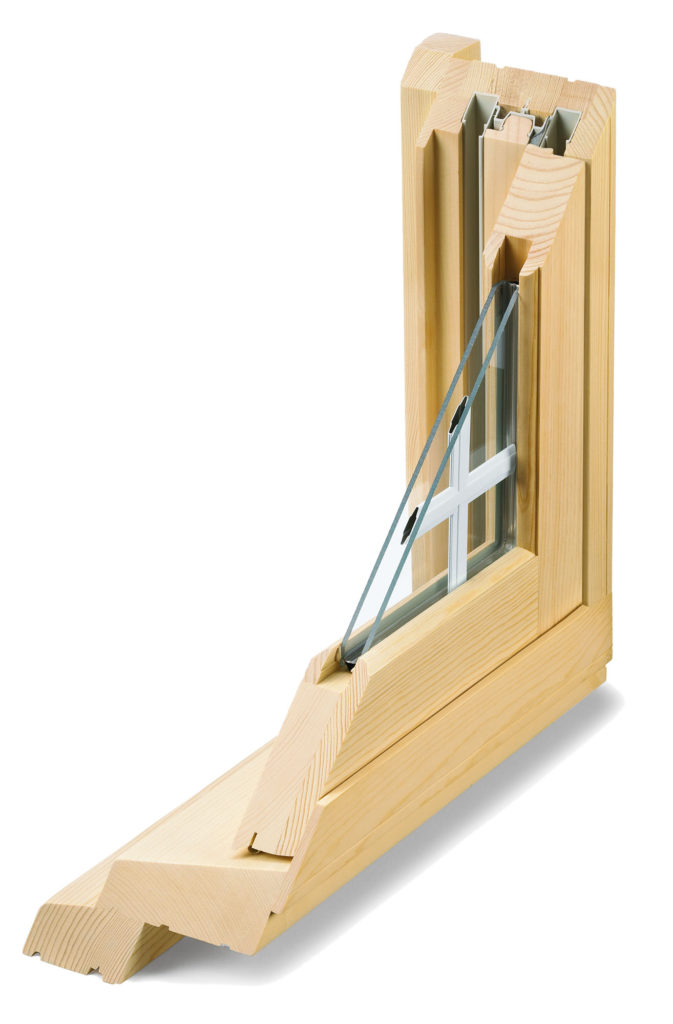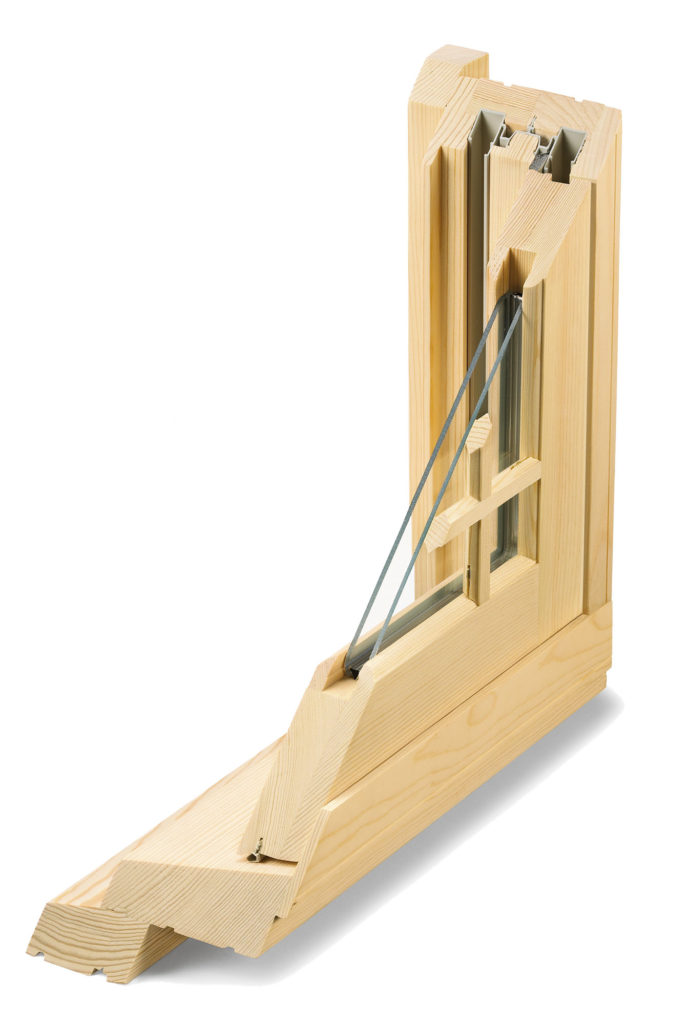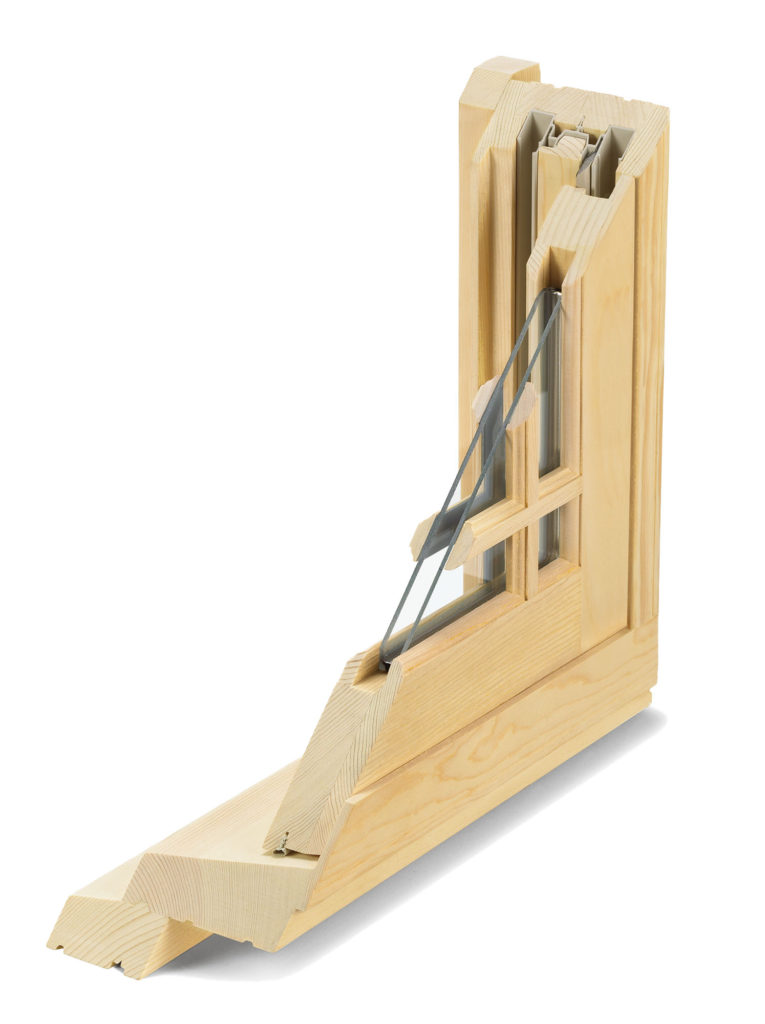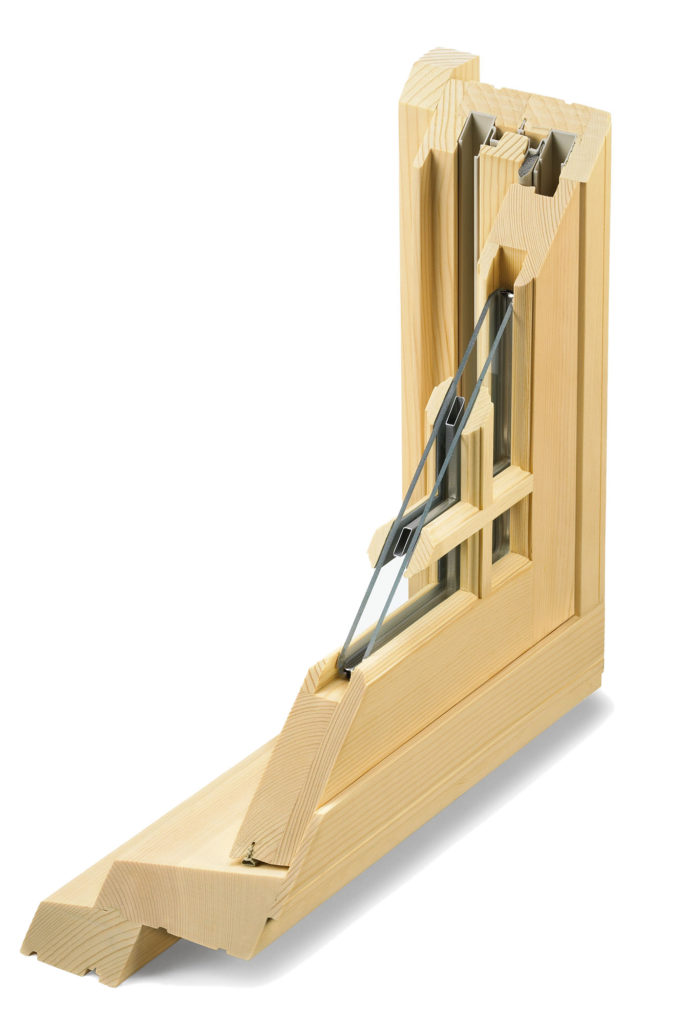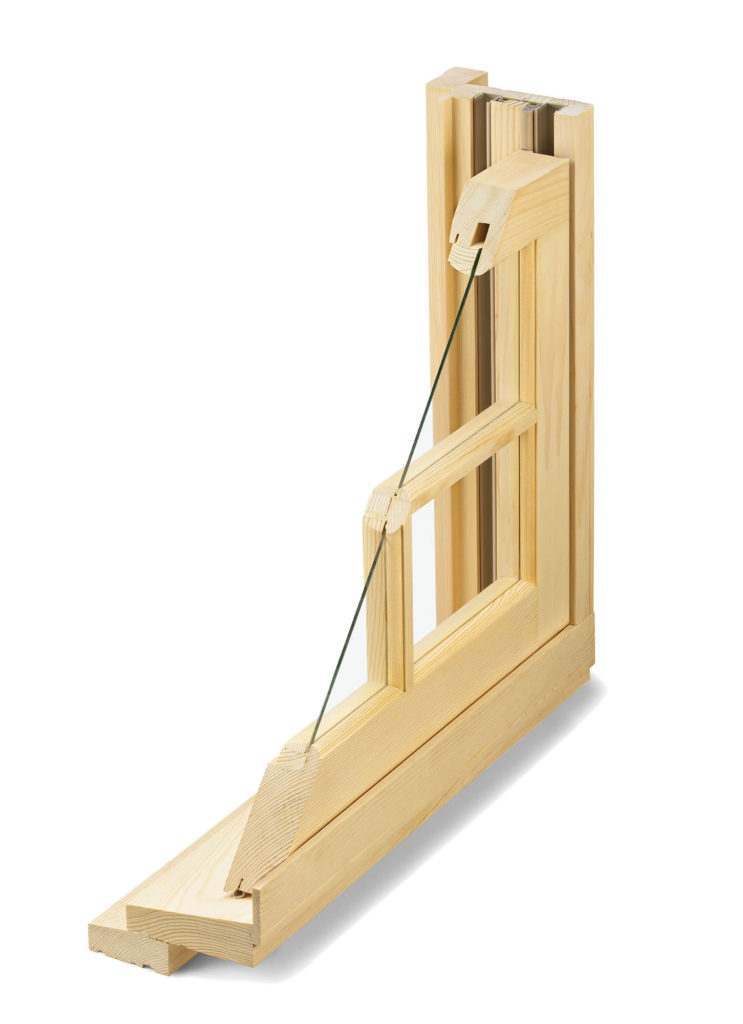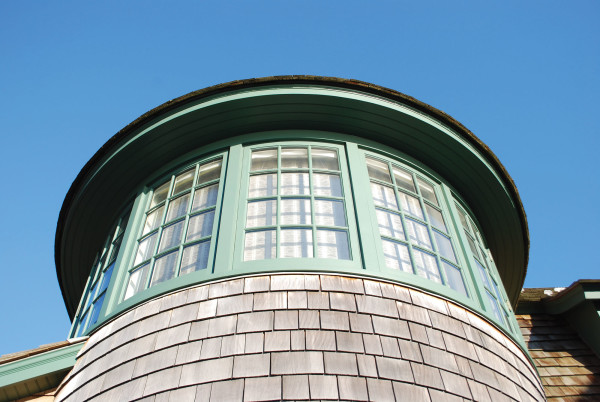
Historical, convincing, and energy efficient: simulated divided lights in a custom installation by Heartwood Windows.
I treasure the few original single-pane casement and double-hung windows that remain in my 80-year-old rustic cottage. But without the old, hand-built, wooden storm windows to create effective double glazing (trapping insulating air in-between), I’d be awfully cold in winter. The cottage came with a few not-so-sturdy replacement windows that long ago outlived their usefulness. They don’t match other windows in the house, and they aren’t double-glazed.
Options for replacement windows, in my case, range from real divided-light windows with multiple, separate panes of glass to simulated divided lights, an increasingly popular option for windows since they were introduced in the last decades of the 20th century. The latest versions of simulated dividers are much more realistic than early snap-in or removable grille versions, which lacked depth and were poorly proportioned, especially in relation to historical windows.
Simulated Divided Lights
Although window manufacturers continue to offer a range of simulated divided lights (or SDLs), the better offerings have dividers that are permanently attached to the interior and exterior panes with a durable adhesive. At minimum, the dividers set in the interior of the window should be made of wood with a realistic muntin profile. If you can afford it, specify a coordinating profile in a weather-resistant wood for the exterior—it will make the windows “read” architecturally from a distance.
To eliminate the flat reflection that make the SDL look fake, opt for windows where the overlay grids are darkened underneath to create a shadow effect, or specify spacer bars between the two panes of glass that follow the pattern of the overlay. Both techniques make it harder to tell that the muntins don’t go all the way through the window.
True Divided Lights
That said, true divided-light sash (TDL) reflects light differently. Multiple panes of glass each reflect light, so that the reflection in the window dances subtly as you pass by. Window frames and muntins on TDLs also tend to be thicker, throwing deeper, more architectural shadow lines.
For a historic or especially significant house, custom windows with true divided lights may still be the best option, especially if the house is subject to local historic landmark requirements. Interestingly, the computer-numeric-control (CNC) capabilities now driving so much of contemporary manufacturing make it much easier to replicate a historic muntin profile, even in a window made using modern methods that piece together windows from many tightly precision-cut parts.
The latest types of simulated dividers are much more realistic than early snap-in or removable grille versions, which lacked depth and good proportions.
A schematic view of a muntin on a double-glazed, true divided light from Heartwood Windows, for example, shows a muntin in a traditional moulding profile that appears to pass through both layers of glass. The muntin is actually passing between individual blocks of glass and wood that make up each double-glazed “light” in the window sash.
On the exterior side, the muntin is pinned in place against the outer glass with wood stops. The schematic only suggests the many parts needed to compose a double glazed “light” that looks like a 200-year-old windowpane.
Affording Custom Work
While custom, true divided-light multi-pane windows made of solid wood can be pricey at upwards of $2,500 per double glazed unit, smaller companies may offer more affordable pricing. Working directly with a manufacturer is a good way to ensure that your “replacement” windows match the old originals still on the house. For those on tighter budgets (like me), stock double-glazed windows with wood grilles fixed to the inside of the sash are more affordable at $200 to $500. Another alternative is to keep (or buy) single-glazed windows and add storms, or interior glazing panels that typically cost $24 to $36 per square foot. Have any remaining original windows reconditioned by a restoration pro.
I’d do that, but I don’t have the option: my old windows are all but gone.
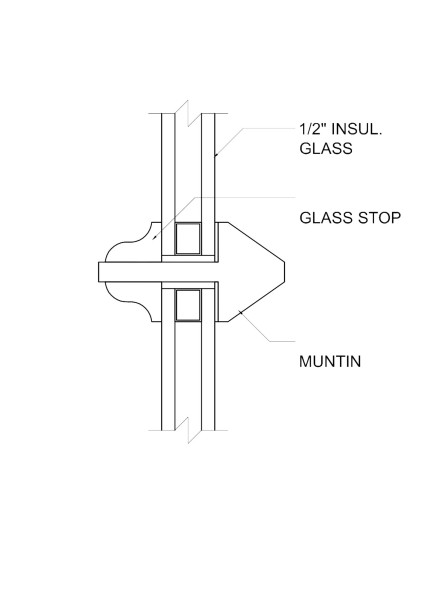
Schematic of a double glazed window from Heartwood Fine Windows & Doors.
In this schematic of a double glazed window from Heartwood Fine Windows & Doors, the arrow-shaped muntin passes between individual, double-glass units of glass “panes.” The muntin is held in place on the other side by wood stops against the glass. (Notice the difference on the inner and outer muntin profiles, which are also historically accurate.)
Visible Division
As shown through this sequence of window grille options from Marvin, deciding between simulated (SDL) or true (TDL) divided lights in insulated replacement windows often comes down to affordability versus architectural appearance.
The least expensive double-glazed option is to place the muntin grille between the sheets of glass. While this gives the window a traditional appearance, the grid lacks dimension and won’t cast shadows like a true divided light window.
A step up, architecturally and in price, is to apply a real wood grille overlay on the interior surface of the glass sash. The single overlay gives the window some architectural relief, but light shadows will still differ from those of true divided windows.
The best SDLs offer architectural wood grilles on both exterior and interior glass surfaces. These double wood grille overlays come closest to the appearance of through-the-glass muntins at a cost 10–30% cheaper than TDLs. A good double grille will also reflect the different profiles found on the interior and exterior parts of the muntin.
In the less expensive option of the two, the back of the grid overlay is applied with a bonding tape in black or a dark shade to enhance the shadow effect of the applied muntin. In a step up, aluminum spacer bars are inserted inside the two glass layers to enhance the sense of a true divided light.
The most expensive option, by far, is a true divided light, with a wood assembly holding individual pieces of glass in place. The high cost comes from engineering individual units for each “pane” that look like traditional windows in factories set up to make windows in a completely different way. A single 12″ x 8″ double-glazed light, for instance, can be composed of dozens of different parts, from the individual panes of glass to multiple pieces of wood, plus hidden components meant to stabilize the structure and keep it weather-tight.
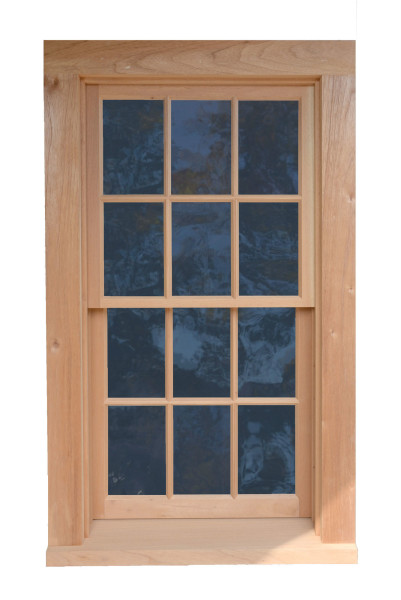
Nantucket double-glazed window from Cooper Smart Windows.
Thermopane Window
The Nantucket double-glazed window from Cooper Smart Windows is composed of two window sashes, both with true divided lights. The exterior sash has salvaged vintage glass, while the interior has new glass, producing a unique version of a Thermopane window that reads as historic.
Window Words
casement window A projecting window hinged at the sides, which usually opens outward
like a door.
double-hung window Two vertically sliding sash that bypass each other in a single frame.
light A pane of glass or compartment of a window, usually expressed in terms of the number of panes per sash, as in 12 over 6 (12 lights in top sash, 6 lights in bottom).
muntin Narrow, milled wood strips that separate individual panes of glass in a window sash.
simulated divided light Usually found on double-glazed windows, an SDL is a window sash with a grid of superficial muntins on the interior and/or exterior of the glass. The best SDLs have spacer bars paralleling the grids between the sheets of glass.
true divided light This is a window sash composed of individual panes of glass held in place by wood muntins.



